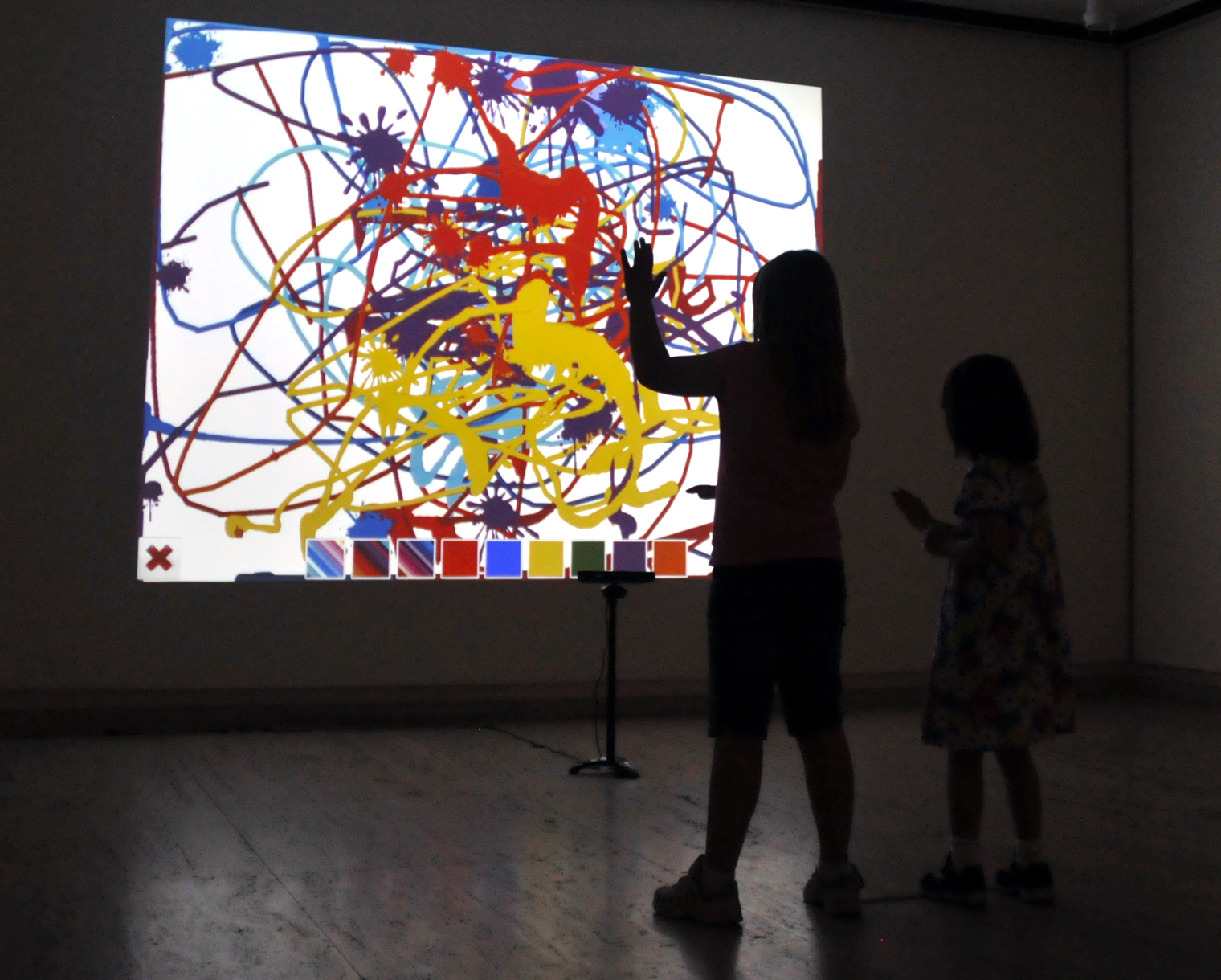
A research project led by Anita Sarma and a team of UNL students is helping decorate one of the "naked" walls within the Sheldon Museum of Art.
As part of Sheldon's 50th anniversary "Naked Museum" celebration, Sarma and the team released the "Kinection Project" for public use in the museum on June 5. Using the gesture-detection software of the Microsoft Kinect system and an application developed by Sarma's students, the project allows users to create Jackson Pollock-like drip paintings on a wall.
Simple hand gestures tracked by the Kinect system create the paintings. A fast arm movement creates a thin line of paint. Slow movements allow the line to thicken; stop and paint starts to drip down the "canvas." Throwing motions toward the wall cause paint splatters to appear.
"The application developed by the students tracks the movement of the arm, from wrist to elbow," said Sarma, assistant professor of computer science and engineering. "The painting application then converts those movements into designs that are projected on the screen."
Two individuals can work on a canvas design at a time. Each design can be saved to an online Flickr account at http://go.unl.edu/kinection.
Over the last two years, students in Computer Science and Engineering's senior design capstone course created the painting application. Those teams include James Sukup and Josh Raef, and Luan Pham and Megan Jensen.
The student researchers are recording video of each painting made. The video will be used to gauge the sensitivity of the device and plan future refinements. Sarma said future updates include adding a musical component to the hand movements. An upcoming update by Microsoft to the Kinect system will also allow for improved tracking of hand gestures.
Sarma said the project could lead to developing applications that allow large amounts of data to be visualized in wall-sized displays and interacted with via physical gestures. She also sees the project as a way to educate the public, particularly children, about the fun side of computer science.
"We want to show the public that computer science can be creative and interactive," said Sarma. "We started to develop the Kinection Project because of its outreach potential. We hope it gets kids excited about pursuing an education in the STEM (science, technology, engineering and math) fields."
The Kinection Project will be available for public use in the Sheldon through June 28. It will be featured in the Sheldon's First Friday event, 5 to 7 p.m. June 7, and at Summer Family Day, 1 to 4 p.m. June 9.
— Troy Fedderson, University Communications